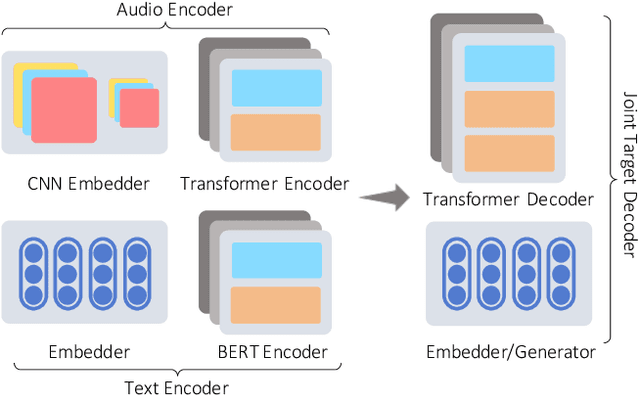Exploring Transfer Learning For End-to-End Spoken Language Understanding
Paper and Code
Dec 15, 2020



Voice Assistants such as Alexa, Siri, and Google Assistant typically use a two-stage Spoken Language Understanding pipeline; first, an Automatic Speech Recognition (ASR) component to process customer speech and generate text transcriptions, followed by a Natural Language Understanding (NLU) component to map transcriptions to an actionable hypothesis. An end-to-end (E2E) system that goes directly from speech to a hypothesis is a more attractive option. These systems were shown to be smaller, faster, and better optimized. However, they require massive amounts of end-to-end training data and in addition, don't take advantage of the already available ASR and NLU training data. In this work, we propose an E2E system that is designed to jointly train on multiple speech-to-text tasks, such as ASR (speech-transcription) and SLU (speech-hypothesis), and text-to-text tasks, such as NLU (text-hypothesis). We call this the Audio-Text All-Task (AT-AT) Model and we show that it beats the performance of E2E models trained on individual tasks, especially ones trained on limited data. We show this result on an internal music dataset and two public datasets, FluentSpeech and SNIPS Audio, where we achieve state-of-the-art results. Since our model can process both speech and text input sequences and learn to predict a target sequence, it also allows us to do zero-shot E2E SLU by training on only text-hypothesis data (without any speech) from a new domain. We evaluate this ability of our model on the Facebook TOP dataset and set a new benchmark for zeroshot E2E performance. We will soon release the audio data collected for the TOP dataset for future research.
 Add to Chrome
Add to Chrome Add to Firefox
Add to Firefox Add to Edge
Add to Edge